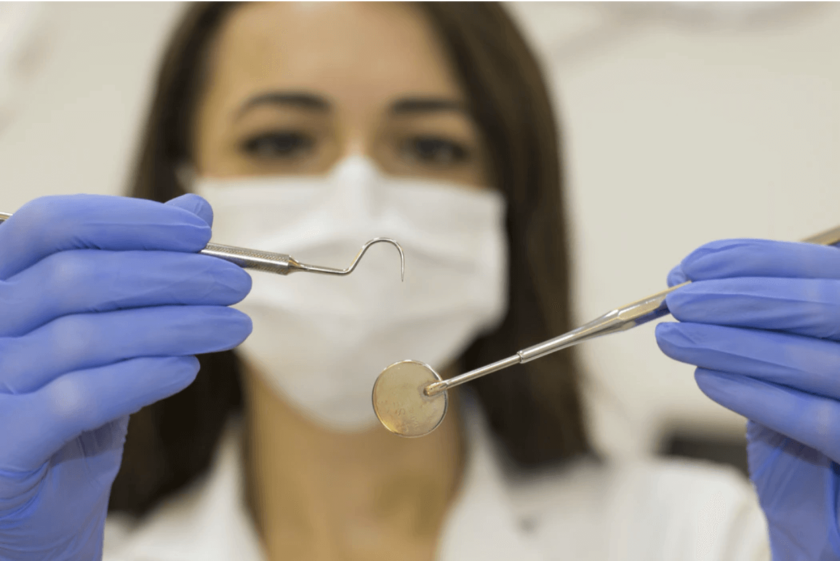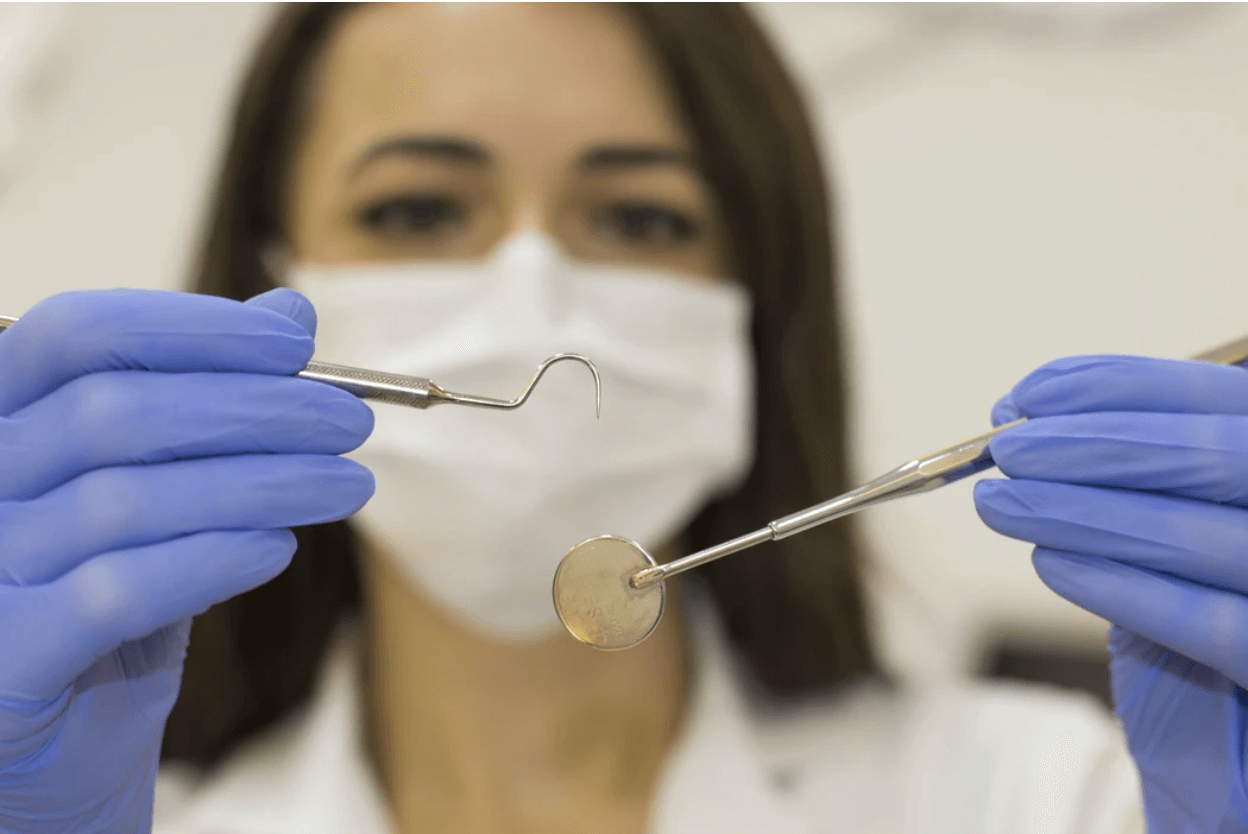Most people will have heard of a root canal and are likely to be fearful of it. However, not a lot of people actually know what a root canal treatment entails. This post will explain what the treatment is, how much it costs, the steps and who needs it.

What Is Root Canal Treatment?
Root canal treatment, also referred to as endodontic therapy, is a dental procedure that removes an infection from inside a tooth. This procedure also acts to protect the tooth from any future infections. It takes place in the pulp of the tooth and this is the root canal. The pulp contains nerve tissues, blood vessels, and other cells. The pulp provides nourishment to the tooth and the nerves within the pulp are the ones that sense hot and cold temperatures.
How Much Does It Cost?
Unfortunately, there is no straightforward answer to this question, as it is very much dependent on several factors. For example, the location of your teeth, the severity, whether it is a recurrence, your dentist’s experience, the cost of crows/fillings, and any other additional fees you might encounter. To learn more about the expenses that come with a root canal, you could consider speaking to different insurers and see how much of the process you can get covered. As a rough guideline, the range you will be looking at is between $500 to $6,000.
What Are The Steps?
There are three steps performed in a root canal procedure, and it can take from one up to 3 sessions to complete.
Step 1: Cleaning Of The Root Canal
First things first, the dentist cleans out the entirety of the root canal. The person receiving the treatment will be placed under local anesthesia as the dentist has to drill a small hole on the top of the tooth to remove the diseased and dead pulp tissue.
Step 2: Filling The Root Canal
Once the tooth has been cleaned and decontaminated, the tooth is then filled with a rubber-like material. This is used to fill the canals properly and adhesive will be used to make sure everything is sealed. Once that happens, the tooth is dead. The person who had the treatment done will no longer feel any sensation of pain in that tooth because the nerves have been removed alongside the infection.
Step 3: Adding Crowns / Fillings
To ensure that the tooth is strong and healthy, it is advised that patients receive a crown or filling as a means of protection. You should avoid chewing or biting anything hard until the crown/filling procedure is complete. Typically, this procedure will only require one appointment, however, if there are complications it could take a couple more.
Who Needs It?
Some symptoms will suggest to you whether or not you need a root canal treatment. These symptoms include the following;
1. Consistent pain
2. Increased sensitivity to hot and cold
3. Discolored teeth
4. Swollen gums
5. Chipped tooth
6. Loose teeth
7. Pain when eating
If you are experiencing any of these symptoms, then it is worth going to a doctor so that you can prevent any further damage to your teeth. The longer you leave it, the worse it can get, and living with the pain is simply not worth it.

Will A Root Canal Treatment Hurt?
Part of the reason people put off going to the dentist for so long is that they are scared of having to undergo a root canal procedure. However, the pain is not all that different from receiving a deep filling. Dentists will use local anesthesia to numb your mouth to reduce the pain and ensure you that you are comfortable. Following the procedure, you are likely to experience some minor facial swelling and your mouth is likely to be quite sore. However, you can take over-the-counter medication to help reduce the pain, such as ibuprofen or acetaminophen. There have been lots of studies conducted over the years that look into the pain and procedure of root canals. A 2011 review of 72 studies found that pain was the highest before treatment, but dropped moderately within 24 hours of the treatment. They also found that the pain was significantly reduced within a week.
Don’t let the fear of a root canal procedure prevent you from getting the help that you need. The reality is that if you need the treatment, and you avoid getting it, you are only causing yourself more pain in the long run, and you also run the risk of increasing the fees that come with the procedure.
Follow Up After A Root Canal Treatment
Following a root canal treatment, you are likely to find that your gums and teeth will feel quite sore. Also, your gums might swell too, but this is perfectly normal and is to be expected. You will have an appointment with your usual dentist a few days after the root canal, and they will take some X-rays just to ensure that everything is okay and that the infection has been completely removed. Avoid chewing any solid foods as much as possible until your crown is placed or the damaged tooth is filled. If you have decided to have a permanent crown fitted on the tooth, then you can choose from the crown being either porcelain or gold. The advantage of a crown is that it appears more realistic than a filling. Be prepared for the fact that it is going to take some time for you to get used to your new teeth, but again, this is normal and there is no cause for concern.
If the over-the-counter medications you are taking are not soothing the pain or if the pain becomes more severe, or lasts longer than a few days, you should call your dentist immediately. Sometimes not all of the infection is caught and so the pain can still occur. Unfortunately, in these circumstances, the procedure will have to be repeated. However, this is not overly common and so it is not something you should worry about.
The Risks Associated with Root Canal Treatment
There are a couple of risks associated with receiving a root canal treatment, however, none of the risks are especially daunting. One of the most common risks that can occur is a loss of the tooth. While the whole point of the procedure is to save the tooth, sometimes the damage is too far gone or the enamel is too weak to withstand the treatment. Another potential risk is the chance of developing an abscess in your mouth, and this can occur if any of the infection has been left behind or if the antibiotics were not effective. If you have any further questions or concerns about the root canal procedure, you can always talk to your dentist. Do not be shy or feel uncomfortable asking questions, because at the end of the day this is about your health, so you have to feel completely comfortable and well-informed regarding the treatment.
What Happens Afterwards?
Once your tooth and mouth have made a full recovery following the restorative procedure, you should be able to go about your life as normal. There will be no need to avoid hard foods or anything like that. However, you do need to make sure that you practice good oral hygiene habits, and this goes for anyone. Make sure to brush your teeth twice a day, floss, and use mouthwash for the best hygiene care.
How Can It Be Avoided?
If you are worried about one day needing a root canal, or you are simply invested in keeping your teeth happy and healthy, then here are some key ways to avoid needing a root canal.
1. Brush your teeth twice a day, every day. While this sounds obvious, a lot of people get too tired or lazy at night and skip this step. Skipping it once in a while is fine, but this can quickly become a bad habit.
2. Make sure you are flossing every day! Skipping out on the floss is like washing only half of your body when you take a shower. Flossing is important because it gets right into the nooks and crannies of your gums, and it can get rid of any root-damaging bacteria.
3. Avoid hard candies, lollipops, and chewing on ice – these all have the potential to crack, fracture, and break your teeth and once that happens bacteria has easy access right to the center of your tooth.
4. Avoid overly acidic drinks such as fizzy drinks, soda, and juices. These kinds of drinks break down enamel and also saturate your teeth in sugar, which bacteria can feast on.
5. Do not skip out on going to the dentist! You need to have regular checkups and cleaning because if a problem is spotted early on then there is a better chance of avoiding root canal treatment.
The bottom line is if you are experiencing any discomfort, pain, or discoloration then you should go to a dentist immediately. The longer you ignore a problem, the worse it will get.

